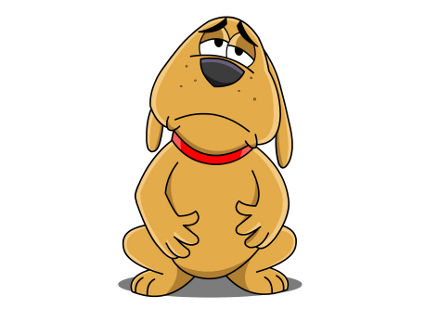Upset Tummy: You know what dogs are like, very often it’s a case of “if its not nailed down, they’ll have a go at eating it!” and invariably, some of the things they eat are not always very agreeable to their digestion. Vomiting and diarrhoea are often the outcome but, confusingly, these symptoms can be caused by many things including mild bugs and diseases or a sudden change in diet. Maybe the symptoms could relate to a more serious life threatening cause, however, and so establishing a diagnosis for the tummy upset is a major consideration.
So, if your dog gets an upset tummy, either with vomiting, diarrhoea or both, what should you do? Well, firstly its important to assess the severity of the problem and take it from there. Treatment for vomiting can range from simply starving the dog and then giving a bland diet (as described below in the treatment for diarrhoea) all the way through to surgical procedures, so it is important to assess the situation carefully:-
Mild Vomiting is described as follows.
* Gradual onset
* Dog behaves much as normal
* Swallows saliva normally
* Abdomen normal size
* Eats as normal
Severe Vomiting is described as follows.
* Frequent vomiting/retching (more than 4 times daily)
* Sudden onset
* Dog depressed and subdued
* Swallowing problems; drooling saliva
* Abdominal distention (swelling/firmness)
* Will not eat
If your dog has diarrhoea and you know it is down to something he has eaten (say a change in his normal diet or something he has managed to get hold of) then please read our blog specifically on this problem: Runny Bum after Eating
However, if the diarrhoea is unexplained and you think it could be down to a bug perhaps, then the following is our recommended treatment for an otherwise healthy dog:

